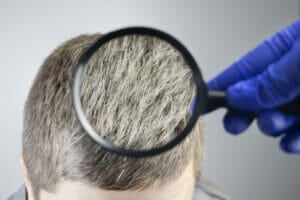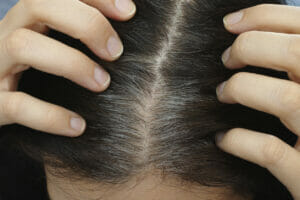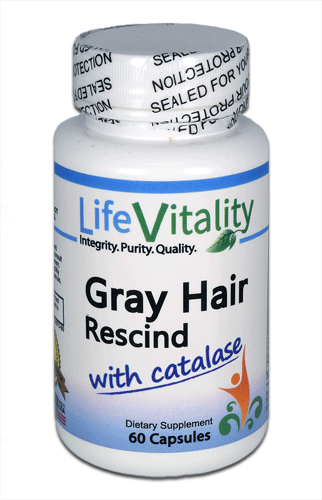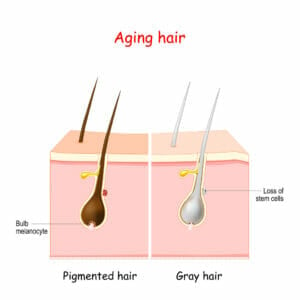The Relationship Between Hydrogen Peroxide, Catalase and Gray Hair

Lets take a closer look at the complex relationship between hydrogen peroxide, catalase and gray hair.
Table of Contents
Why Does Hair Go Grey?
While we all get older, there may be a difference between chronological aging and the appearance of age. The fact that people get grey hair at various stages of life, some even in their 20’s suggests that chronological age isn’t the only factor in play. In fact, the term “premature grey” doesn’t even apply unless you go grey before the age of 20. (1) While the appearance of aging has many factors involved, including genetics, exposure to chemicals, and the amount of time spent in the sun, scientists now know that they aren’t the only factors.
A significant factor in the greying of hair is oxidative stress. A review and study of how aging affects hair follicle pigment stated “a recent study by the Peter’s lab in Berlin has reported that the follicular melanin unit of graying hair follicles is indeed associated with increased melanocyte death by apoptosis and oxidative stress.” (1) In lay terms that means that the color cells in a hair follicle are damaged by oxidation, causing them to gradually die off which causes your hair to gradually turn grey. The same study concluded “graying hair follicles are less well equipped to handle exogenous oxidative stress and that this was likely due to their impaired antioxidant systems.”
One cause of oxidation is hydrogen peroxide. That’s right, researchers have discovered that the same hydrogen peroxide that is beloved by bottled blondes the world over to bleach hair on the outside also bleaches hair from within—an unfortunate fact if you want to keep your natural colored tresses. (2) They also found that the buildup of hydrogen peroxide disturbed the hair follicles ability to produce melanin, the compound that is responsible for hair and skin color—amplifying the bleaching, aka greying, process.
Is There a Way to Prevent or Reverse Grey Hair?

Another answer may be catalase. Catalase acts as a hydrogen peroxide neutralizer. While hydrogen peroxide is the natural result of cellular processes, a buildup can wreak havoc on the system so we need catalase. Produced by the body, catalase is an enzyme that scavenges hydrogen peroxide and breaks it down into its components—oxygen and water. Researchers have noted that there seems to be a relationship between low catalase levels in the body, higher levels of hydrogen peroxide, and grey hair. (2) Unfortunately, the older we get, the less catalase our bodies produce.
While genetics and environmental exposure to oxidative stress may contribute to grey hair, there are ways to reduce their impact on your hair. Life Vitality’s Grey Hair Rescind was specially designed with catalase, as well as zinc and biotin, to increase your hair’s health.

Click here to experience the power of catalase today!
Thank you for taking the time to read The Relationship Between Hydrogen Peroxide, Catalase and Gray Hair
Please note: All information presented to you in this website is intended for your general knowledge only and is not a substitute for medical advice or treatment for specific medical conditions. We cannot, and will not give you medical advice. We strongly recommend you consult your physician for any and all specific health issues. If you have any questions or contributions, please contact us via email or phone-call. We are constantly looking for new information to promote wellness – and hearing from you would make our day.
Live Vibrantly!


